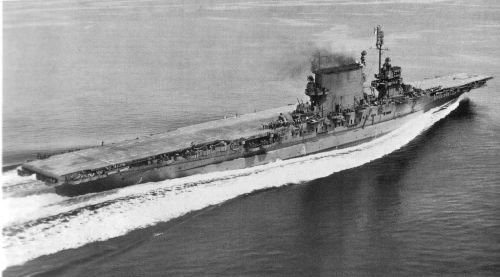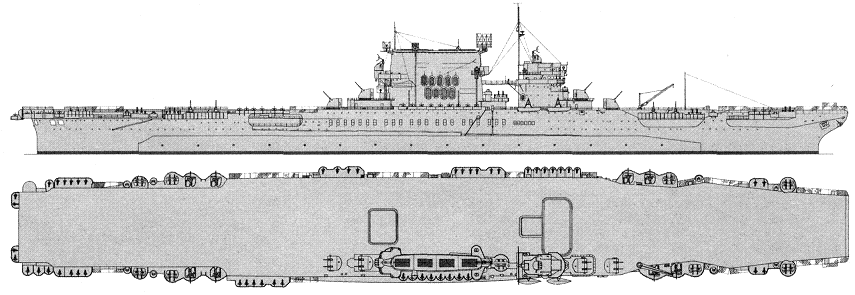
NAVYPEDIA
 Support the project with paypal
Support the project with paypal
Photo

Saratoga 1945
Ships
| No | Name | Yard No | Builder | Laid down | Launched | Comm | Fate |
|---|---|---|---|---|---|---|---|
| CV2 | Lexington | 300 | Bethlehem, Quincy | 8.1.1921 | 3.10.1925 | 14.12.1927 | sunk 8.5.1942 |
| CV3 | Saratoga | 199 | New York SB, Camden | 25.9.1920 | 7.4.1925 | 16.11.1927 | sunk as target in nuclear tests 25.7.1946 |
Technical data
| Displacement standard, t | 37681 |
|---|---|
| Displacement full, t | 43055 |
| Length, m | 259.1 wl 270.7 oa |
| Breadth, m | 32.1 |
| Draught, m | 10.2 |
| No of shafts | 4 |
| Machinery | 4 electric motors, 4 General Electric turbo-generators, 16 Yarrow boilers |
| Power, h. p. | 180000 |
| Max speed, kts | 33.2 |
| Fuel, t | oil 2400 - 3600 |
| Endurance, nm(kts) | 10500 (15) |
| Armour, mm | belt: 178 - 127, lower deck: 32 on 19mm plating, CT: 51 sides, 51 roof |
| Armament | 4 x 2 - 203/55 Mk 9, 12 x 1 -127/25 Mk 10.11.13, 63 aircraft (FB, F6C Hawk, FU, F2B, F3B fighters, DT, SC, P2D, T2D, T3M torpedo-bombers, UO, O2U Corsair reconnaissance planes, VE-7, VE-9 multipurpose planes) |
| Complement | 2327 |
Air group
| Year | Fighters | dive bombers | Reconnaissance | torpedo-bombers |
|---|---|---|---|---|
| 1937 (Lexington) | 18 F2F-1, 18 F4B-4 | 18 BG-1, 20 SBU-1 | 3 O2U-3 Corsair, 2 JF-1 | --- |
| 5.1942 (Lexington) | 22 F4F Wildcat | 36 SBD Dauntless | --- | 12 TBD Devastator |
| 8.1942 (Saratoga) | 36 F4F Wildcat | 37 SBD Dauntless | --- | 15 TBF Avenger |
| 4.1944 (Saratoga) | 27 F6F Hellcat | 24 SBD Dauntless | --- | 18 TBF Avenger |
Standard scale images

Saratoga 1944

Lexington 1939

Saratoga 1944
Graphics
Aircraft facilities
(fd - 7,349 m², ha - 2,920 m² / 18,687 m³): Flight deck: 268.2 x 27.4 m. Hangar: 129.2 x 22.6 x 6.4 m. Elevators: fore (9.0 x 18.1m, 7.3t) and aft (8.9 x 10.6m, 2.7t). One 47m catapult F Mk 1. Aircraft fuel stowage in 1942: 520 500 l.
Project history
Largest and fastest aircraft carriers of their time. They were laid down as battlecruisers, but after Washington conference re-ordered as aircraft carriers (CV2 and 3 22.11.1922 and 30.10.1922 respectively). Concerning applied construction and architecture decisions Lexington and Saratoga appreciable effected on the further development of aircraft carriers. Their flight deck and outside hangar sides were designed as a part of hull construction, participating in providing of the longitudinal strength (unlike the subsequent ships, having the flight deck and a hangar fulfilled as a superstructure). Similar constructive decision has ensured a certain prize in hull weight and allowed to make a single-level hangar completely closed. Aft from hangar there were repair shops, there were holds for taken apart planes below it. Two elevators were arranged close enough to each other. Aft one was intended only for fighters, and fwd for heavy planes. Curious feature of fwd elevator was that it could lift aircrafts with the length of a fuselage bigger of elevator length with help of additional folding 6x8m hatch. At the same time presence of only two elevators on so huge ships became serious miscalculation of designers and later negatively affected efficiency of combat usage of carrier aircraft.
Lexington and Saratoga had unusual turbo-electric machinery with huge power: 180000hp. Turbo-generators were installed in central compartments, and boiler rooms at the left and to the right of them alongsides. According to 1920th tactical doctrines, aircraft carriers were armed by 8 203mm guns in four turrets.
Ship protection
Main 178mm belt had 161.5m length and 2.9m height. It was connected with flat 51mm main deck at upper edge. Underwater protection had 4.8m depth and included 4 compartments.
Modernizations
1929, Lexington: + 2 x 6 - 7.6/90
1929, Saratoga: + 2 x 2 - 12.7/90
early 1930s, Lexington: - 2 x 6 - 7.6/90
1934, both: catapult was removed
1936, Lexington: + 28 x 1 - 12.7/90
1937, Saratoga: - 2 x 2 - 12.7/90; + 28 x 1 - 12./790
spring 1940, both: + 4 x 1 - 12.7/90, CXAM-1 radar
1940, both: - 4 x 1 - 12.7/90; + 5 x 1 - 76/50 Mk 20
1941, both: - 5 x 1 - 76/50; + 5 x 4 - 28/75 Mk 1
early 1942, Saratoga: - 28 x 1 - 12.7/90; + 4 x 4 - 28/75 Mk 1, 32 x 1 - 20/70 Mk 4
4/1942, Lexington: - 4 x 2 - 203/55; + 7 x 4 - 28/75 Mk 1, 32 x 1 - 20/70 Mk 4, 2x Mk 4 radars
5/1942, Saratoga: - 4 x 2 - 203/55, 12 x 1 - 127/25, 4 x 4 - 28/75, 2 x 1 - 20/70; + 4 x 2 - 127/38 Mk 12, 8 x 1 - 127/38 Mk 12, 4 x 4 - 40/56 Mk 1.2, 2 H II catapults, SC, 2x Mk 4 radars. Breadth was increased by starboard bulge to 34.1m, and displacement rose to 40000 / 48552t. Flight deck was lengthened, length oa was 277.2 m(fd - 7,595 m², ha - 2,920 m² / 18,687 m³). Maximal fuel stowage rose to 9748t. Complement was 3373.
10/1942, Saratoga: - 5 x 4 - 28/75; + 5 x 4 - 40/56 Mk 1.2, 22 x 1 - 20/70 Mk 4
1/1944, Saratoga: - 36 x 1 - 20/70; + 14 x 4 - 40/56 Mk 1.2, 2 x 2 - 40/56 Mk 1.2, SK radar
summer 1944, Saratoga: + SM radar
5/1945, Saratoga: aft elevator was deleted, new fwd elevator was fitted
1/1946, CV3 Saratoga: 4 x 2 - 127/38 Mk 32, 8 x 1 - 127/38 Mk 33, 23 x 4 - 40/60 Mk 2, 2 x 2 - 40/60 Mk 1, 16 x 1 - 20/70 Mk 10, 2 catapults, 63 aircraft, SC, SK, SM, 2x Mk 4 radars
Naval service
Lexington 7.5.1942 during battle in Coral sea was badly damaged by Japanese carrier aircraft (from carriers Shokaku and Zuikaku, received two torpedo and two 60kg bomb hits), abandoned by crew and torpedoed by destroyer Phelps. She foundered 8.5.1942.
Saratoga 11.1.1942 was damaged by a torpedo from Japanese submarine I16 and was under repair till late May, 1942; 31.8.1942 she was again torpedoed by Japanese submarine I26 and returned to service in late November, 1942; during Iwo Jima landing 21.2.1945 she was badly damaged by Japanese aircraft (hits of four bombs and two kamikazes), returned to service in May, 1945; later she was used at nuclear tests at Bikini, damaged 1.7.1946 and sunk after explosion 25.7.1946.
 HOME
HOME FIGHTING SHIPS OF THE WORLD
FIGHTING SHIPS OF THE WORLD UNITED STATES OF AMERICA
UNITED STATES OF AMERICA AIRCRAFT CARRYING SHIPS
AIRCRAFT CARRYING SHIPS LEXINGTON aircraft carriers (1927)
LEXINGTON aircraft carriers (1927)
